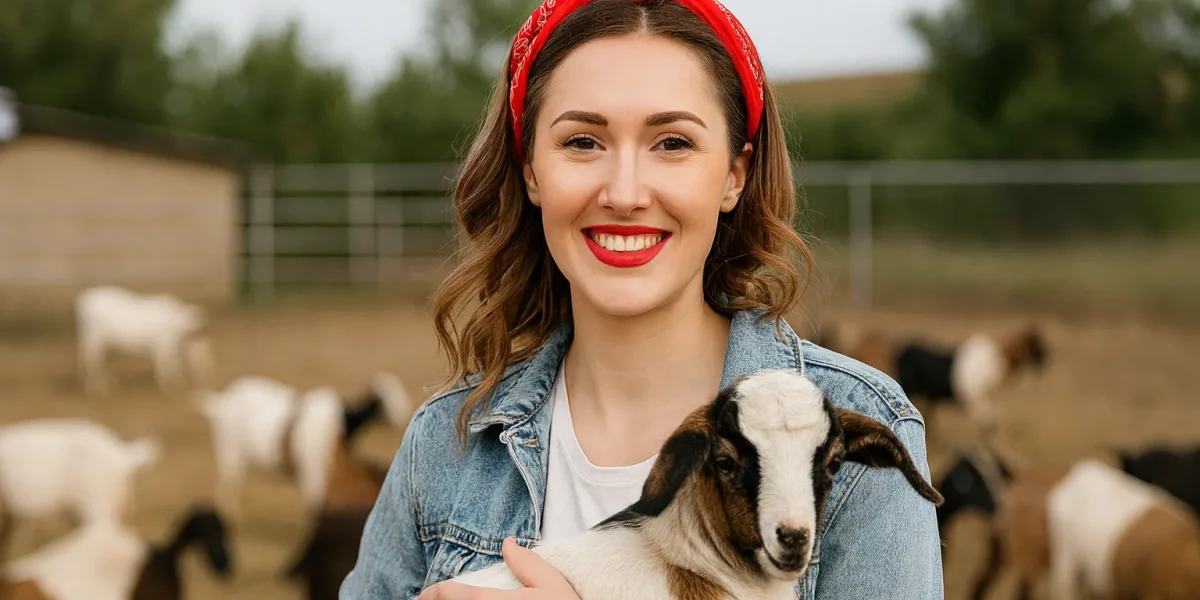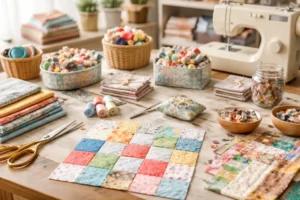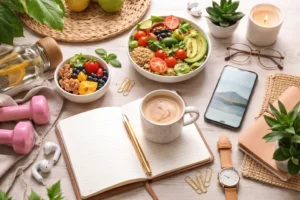When I first dipped my hands into a warm pail of fresh goat milk, I realized just how much of a game-changer small-scale goat milk production could be for a homestead. Not only is goat milk delicious and easier to digest than cow’s milk, but the entire process—raising, milking, and caring for the herd—has taught me more about farming than I ever expected. Over the years, I’ve learned what works, what doesn’t, and why more people are turning to goats as their dairy animals of choice.
In this post, I want to share those lessons. If you’ve ever searched for milking goats for sale near me, wondered what kind of goat farming equipment for beginners you’ll need, or been curious about why so many people invest in registered Nubian goats for dairy, you’re in the right place. We’ll also talk about building a herd, choosing the right goat breeding stock, and even what to expect if you decide to put up a goat herd for sale with health records down the road.
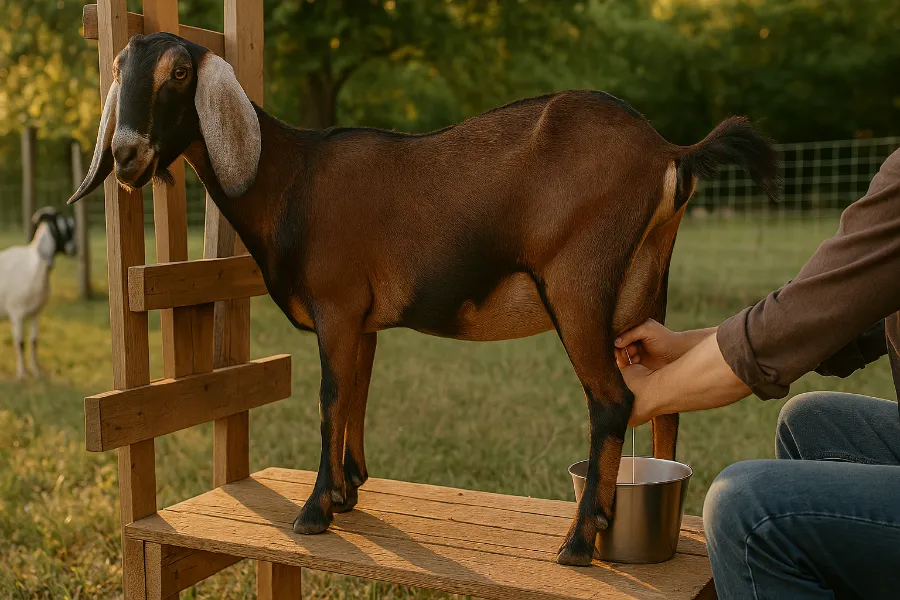
Milking Goats for Sale: Finding the Right Fit
One of the first things I discovered is that not all goats are created equal when it comes to milk. You might see ads online for milking goats for sale, but choosing the right one takes more than scrolling through photos.
When I bought my first doe, I didn’t know to check her udder structure or her milk records. She turned out to be sweet, but her yield was low, and milking her felt like a wrestling match. Lesson learned! Now, I always look for:
- Strong udder conformation with evenly placed teats.
- Documented milk production from the breeder.
- A calm, friendly temperament—because you’ll be spending a lot of time with her.
Popular breeds like Nubians, Alpines, and Saanens are dependable choices for dairy. Nubians, especially, have that rich, high-butterfat milk that makes the best cheese and soap. In fact, they’re among the best goat breeds for milk production, particularly if you plan to make yogurt or cheese at home.
Goat Farming Equipment: What You Actually Need
When I first started, I thought I needed to buy everything under the sun. Truth is, you don’t need fancy gear to get started with goat farming equipment for beginners but a few key pieces of essential tools for goat farming make all the difference.
Here’s what I can’t live without:
- Milking stand – This keeps my goats steady and me sane.
- Stainless steel pails and strainers – Easy to clean and safe for milk.
- Udder wash and clean towels – Mastitis prevention is no joke.
- A pasteurizer or quick cooling setup – If you’re drinking or selling milk, food safety is top priority.
- Good fencing – Goats are escape artists; trust me, they will test every weak spot.
If you enjoy DIY, learning how to build a goat milking stand can save money and make milking time more efficient. Over time, I’ve added extras like a small bulk tank for cooling and even tried an automatic milker. But for beginners, keeping it simple works just fine.
Registered Nubian Goats: Why I Chose Them
I’ll admit it—I fell in love with Nubians before I ever owned one. Their long, floppy ears and sweet personalities drew me in, but once I started milking them, I realized why so many breeders recommend registered Nubian goats for dairy.
Why registered? It’s about consistency. Registration means you know their lineage, health records, and production background. My registered Nubian does consistently give me milk with higher butterfat—perfect for cheese-making. Plus, having registered goats opens doors for breeding and selling at better prices. That’s how I began creating homestead goat milk business ideas, turning my extra milk into income through cheese and soap sales.
If you’re serious about building a herd or even selling starter goats, Nubians are an investment worth making.
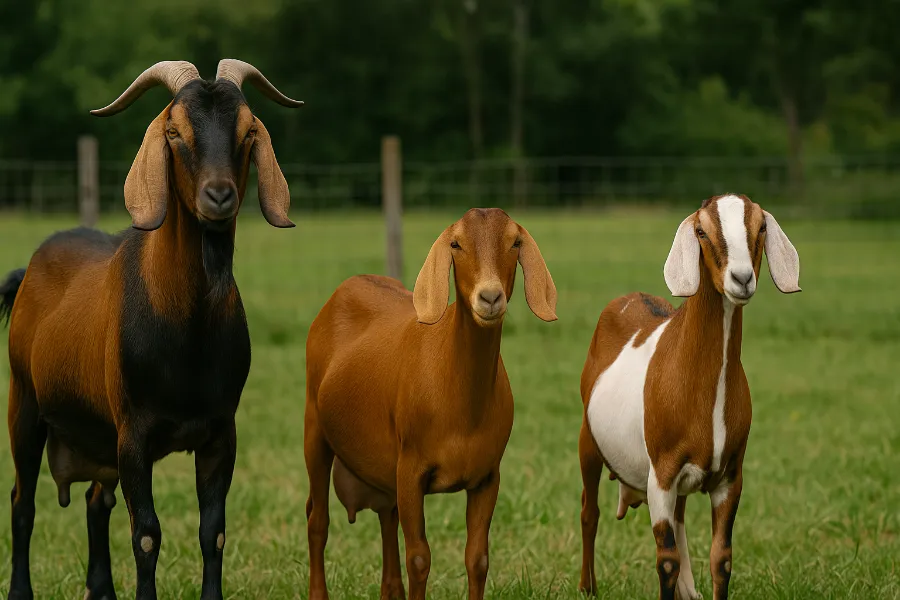
Goat Herd for Sale: Scaling Up and Selling
After a few kidding seasons, I had more goats than my family needed. Suddenly, I was the one with a goat herd for sale with health records. It was both exciting and overwhelming.
Here’s what I learned when selling goats:
- People want health records and vaccination history—be upfront.
- Be ready to answer questions from beginners who might need extra guidance.
- Offering a starter herd package (a doe, her kid, and some supplies) can make your sale more appealing.
The best part? Selling goats isn’t just about money—it’s about passing on the joy of goat keeping to new families. Many of my buyers still send me updates, and nothing makes me happier than seeing those goats thrive.
Goat Breeding Stock: Building the Future
If you want your goat milk production to last, investing in quality goat breeding stock is crucial. I used to think any buck would do, but the genetics you introduce to your herd matter more than you think.
Here’s my checklist now:
- Strong, healthy lines with no history of chronic illness.
- Good conformation, especially legs, back, and udder traits.
- Proven milk production in the doe’s lineage.
- Balanced genetics—avoid inbreeding at all costs.
A good buck can improve your entire herd. And while bucks may not be everyone’s favorite to keep (yes, they smell), they’re the foundation of future milk production. If you plan to expand, learn how to choose quality goat breeding stock to strengthen your line over time.
Daily Routine: What Goat Milk Production Really Looks Like
So what does goat milk production actually look like day-to-day? In my house, mornings and evenings revolve around milking. Twice a day, every day, at the same time. Consistency keeps both the goats and the milk flow steady.
Here’s a glimpse of my daily goat milking routine tips:
- Bring the does onto the milking stand.
- Clean udders with warm water and udder wash.
- Milk into a stainless steel pail, straining immediately.
- Chill the milk quickly for freshness.
It’s a rhythm you fall into, and honestly, it becomes a kind of therapy. The quiet sound of milk hitting the pail is one of my favorite homestead moments.
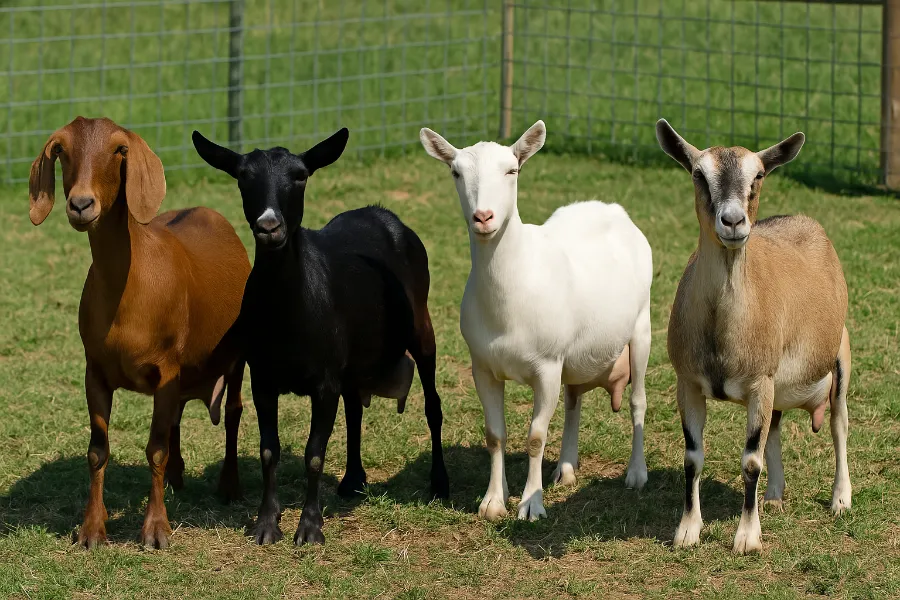
Feeding and Care: Milk Starts with Nutrition
I used to think any hay would do—but if you want strong milk production, quality feed is everything. My goats thrive on:
- Fresh pasture during the growing season.
- Second-cut hay in winter.
- A grain mix for does in milk.
- Free-choice minerals and baking soda.
- Unlimited fresh water (a must—dairy goats drink a ton).
The difference in milk yield and quality when I upgraded my feed was night and day. Good feed equals good milk. That’s why I always study feeding dairy goats for higher yield and tailor their nutrition seasonally. And remember: how to prevent mastitis in dairy goats starts with cleanliness, hydration, and stress-free milking.
Beyond Milk: Value-Added Products
Goat milk production doesn’t stop at the pail. In fact, the real fun begins when you turn that milk into something new. I’ve dabbled in:
- Fresh chèvre and hard cheeses.
- Yogurt and kefir.
- Goat milk soap (a big hit at local markets).
- Bottle-fed kids, which often sell for more than the milk itself.
Learning how to make cheese from goat milk at home opened up a world of possibilities. For homesteaders looking to generate income, value-added homestead goat milk business ideas can transform a small herd into a sustainable lifestyle.
Final Thoughts: Why I’ll Always Keep Goats
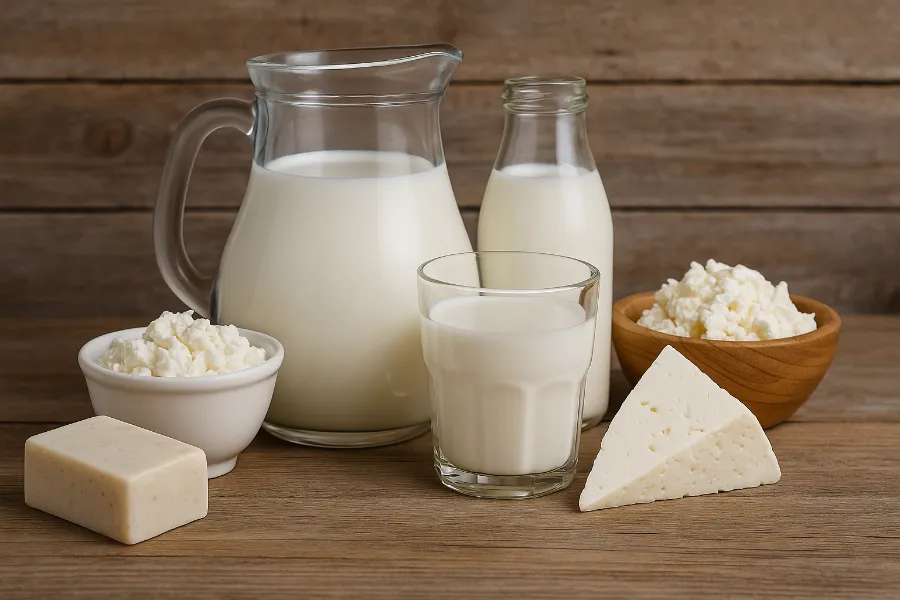
Raising goats hasn’t always been easy—there have been late-night kiddings, unexpected vet calls, and more fence repairs than I can count. But goat milk production has given my family healthy food, an income stream, and countless memories.
If you’re on the fence about diving in, start small. Look for milking goats for sale near me, invest in the right goat farming equipment for beginners, and consider whether registered Nubian goats for dairy might be your perfect match. Build your herd with quality goat breeding stock, focus on feeding dairy goats for higher yield, and you might soon find yourself with your own goat herd for sale with health records.
It’s a journey worth taking. And trust me—once you’ve tasted fresh goat milk, you’ll never go back.
FAQs
Small-scale goat milk production involves raising a few dairy goats to produce milk for personal use or local sale. It’s ideal for homesteaders seeking self-sufficiency.
Popular dairy breeds include Nubian, Alpine, and Saanen goats. Nubians are especially known for their rich, high-butterfat milk.
Basic goat farming equipment includes a milking stand, stainless steel pails, strainers, and clean towels. Beginners can start simple and expand later.
Most dairy goats are milked twice daily, about 12 hours apart. Consistency helps maintain healthy udders and steady milk flow.
Provide quality hay, pasture, and grain mixes for does in milk. Fresh water and free-choice minerals are also essential for high milk production.
Registered Nubian goats have reliable lineage and high butterfat content, perfect for making cheese and soap. Their friendly temperament also makes them easy to manage.
Yes, but local regulations vary. Many homesteaders turn their milk into value-added products like cheese or soap to sell legally and profitably.

